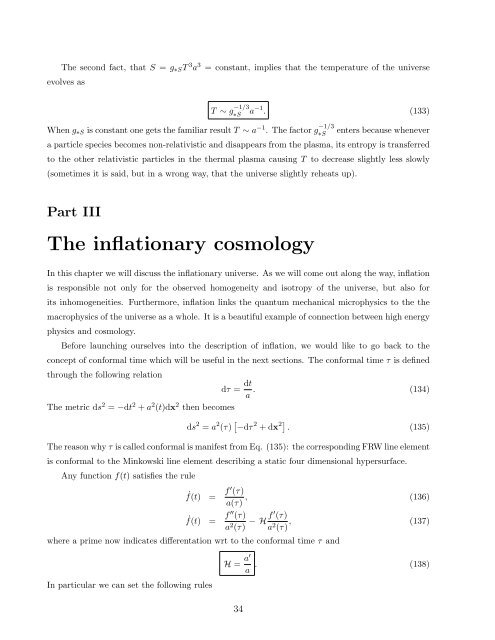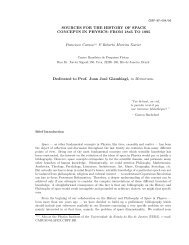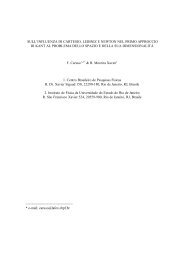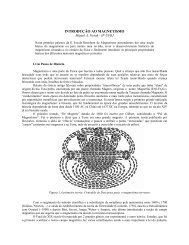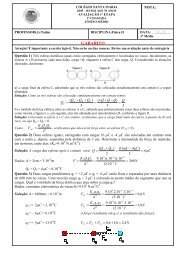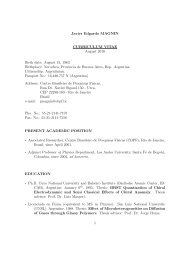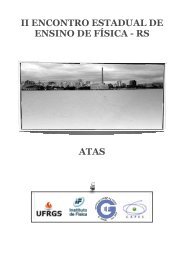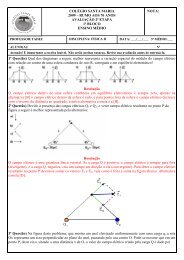Primordial non-Gaussianity in the cosmological perturbations - CBPF
Primordial non-Gaussianity in the cosmological perturbations - CBPF
Primordial non-Gaussianity in the cosmological perturbations - CBPF
Create successful ePaper yourself
Turn your PDF publications into a flip-book with our unique Google optimized e-Paper software.
The second fact, that S = g∗ST 3 a 3 = constant, implies that <strong>the</strong> temperature of <strong>the</strong> universe<br />
evolves as<br />
T ∼ g −1/3<br />
∗S a−1 . (133)<br />
When g∗S is constant one gets <strong>the</strong> familiar result T ∼ a−1 . The factor g −1/3<br />
∗S enters because whenever<br />
a particle species becomes <strong>non</strong>-relativistic and disappears from <strong>the</strong> plasma, its entropy is transferred<br />
to <strong>the</strong> o<strong>the</strong>r relativistic particles <strong>in</strong> <strong>the</strong> <strong>the</strong>rmal plasma caus<strong>in</strong>g T to decrease slightly less slowly<br />
(sometimes it is said, but <strong>in</strong> a wrong way, that <strong>the</strong> universe slightly reheats up).<br />
Part III<br />
The <strong>in</strong>flationary cosmology<br />
In this chapter we will discuss <strong>the</strong> <strong>in</strong>flationary universe. As we will come out along <strong>the</strong> way, <strong>in</strong>flation<br />
is responsible not only for <strong>the</strong> observed homogeneity and isotropy of <strong>the</strong> universe, but also for<br />
its <strong>in</strong>homogeneities. Fur<strong>the</strong>rmore, <strong>in</strong>flation l<strong>in</strong>ks <strong>the</strong> quantum mechanical microphysics to <strong>the</strong> <strong>the</strong><br />
macrophysics of <strong>the</strong> universe as a whole. It is a beautiful example of connection between high energy<br />
physics and cosmology.<br />
Before launch<strong>in</strong>g ourselves <strong>in</strong>to <strong>the</strong> description of <strong>in</strong>flation, we would like to go back to <strong>the</strong><br />
concept of conformal time which will be useful <strong>in</strong> <strong>the</strong> next sections. The conformal time τ is def<strong>in</strong>ed<br />
through <strong>the</strong> follow<strong>in</strong>g relation<br />
dτ = dt<br />
. (134)<br />
a<br />
The metric ds2 = −dt2 + a2 (t)dx2 <strong>the</strong>n becomes<br />
ds 2 = a 2 (τ) −dτ 2 + dx 2 . (135)<br />
The reason why τ is called conformal is manifest from Eq. (135): <strong>the</strong> correspond<strong>in</strong>g FRW l<strong>in</strong>e element<br />
is conformal to <strong>the</strong> M<strong>in</strong>kowski l<strong>in</strong>e element describ<strong>in</strong>g a static four dimensional hypersurface.<br />
Any function f(t) satisfies <strong>the</strong> rule<br />
f(t) ˙ = f ′ (τ)<br />
,<br />
a(τ)<br />
(136)<br />
f(t) ˙ = f ′′ (τ)<br />
a2 (τ) − H f ′ (τ)<br />
a2 ,<br />
(τ)<br />
(137)<br />
where a prime now <strong>in</strong>dicates differentation wrt to <strong>the</strong> conformal time τ and<br />
In particular we can set <strong>the</strong> follow<strong>in</strong>g rules<br />
H = a′<br />
a<br />
34<br />
. (138)


